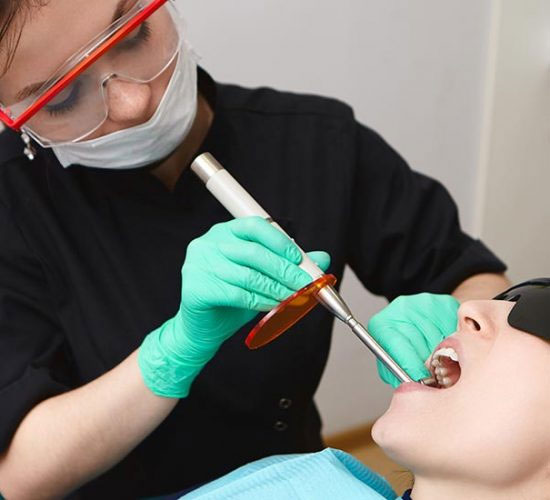Gum Disease Treatment:
Gum disease, also known as periodontitis, is a serious condition that can lead to tooth loss and other health problems. It is caused by plaque, a sticky film of bacteria that forms on teeth and gums. If plaque is not removed regularly, it can harden into tartar, which can irritate and inflame the gums. Over time, this inflammation can damage the tissues and bones that support the teeth, leading to tooth loss.
Gum disease is often treated by a dentist or periodontist (a gum specialist). The type of treatment recommended will depend on the severity of the disease.
Prevention
The best way to prevent gum disease is to practice good oral hygiene and see your dentist for regular checkups and cleanings. Early detection and treatment of gum disease can help to prevent tooth loss and other complications.

Nonsurgical treatments
Nonsurgical treatments are typically used for mild to moderate gum disease. These treatments include:
- Scaling and root planing: This procedure removes plaque and tartar from the surfaces of the teeth, including below the gum line.
- Antibiotics: Antibiotics may be prescribed to help control the infection.
- Mouth rinses: Mouth rinses containing antiseptic ingredients, such as chlorhexidine, can help to reduce plaque and bacteria.
Surgical treatments
Surgical treatments may be necessary for more severe cases of gum disease. These treatments include:
- Pocket reduction surgery: This surgery reduces the depth of the pockets between the teeth and gums, making it easier to keep them clean.
- Bone grafting: This surgery replaces lost bone tissue around the teeth.
- Gum grafting: This surgery uses tissue from other parts of the mouth to cover exposed tooth roots.

Certified Dentist
Our certified dentists have the knowledge and experience to keep your teeth and gums healthy.

New Technology
Dentistry has come a long way over the years, with advancements in technology reshaping.

Pathology Service
When it comes to healthcare, accurate and timely diagnoses are the foundation of effective.
